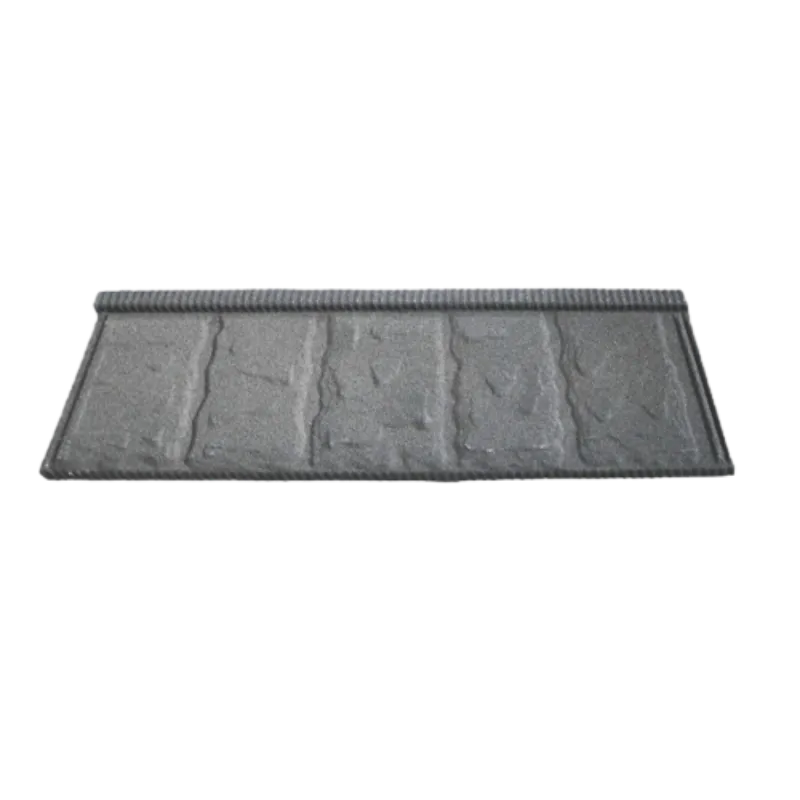
aug . 26, 2025 14:56 Tilbake til listen
Roofing Granule: Composition, Function, and Application
Roofing Granule, As a key component of asphalt shingles, a common roofing material, it not only gives them a beautiful appearance, but also plays an important role in protecting asphalt shingles from environmental erosion. Understanding the composition, function, and application of Roofing Granules is crucial for evaluating the quality of asphalt shingles and extending the lifespan of roofs.

From a compositional perspective, Roofing Granules are typically composed of the following materials
Base particles, coloring agents, and adhesives. The base particles are generally made of hard and wear-resistant natural rocks, such as basalt, quartz sand, etc. These materials have good weathering resistance and water resistance, and can withstand long-term natural environmental tests. Colorants endow the tiles with rich colors to meet the needs of different architectural styles. Common coloring agents include inorganic pigments and metal oxides. Shingle granules have the characteristic of being resistant to ultraviolet radiation and can maintain the durability of color. Finally, the adhesive firmly adheres the coloring agent to the surface of the substrate particles. Common adhesives include silicates, acrylates, etc., which can ensure that the coloring layer does not easily peel off.
The function of Roofing Granules goes far beyond beautifying the roof
Firstly, metal roof with granules can effectively block direct UV radiation on asphalt shingles, delaying the aging rate of asphalt. Asphalt is an important component of asphalt shingles, but it is highly sensitive to ultraviolet radiation and can easily degrade when exposed to sunlight for a long time, causing the tiles to become brittle and crack. The presence of tile particles is equivalent to a protective film, greatly extending the service life of asphalt tiles. Secondly, tile particles can enhance the wear resistance and impact resistance of asphalt tiles. Roofs are often eroded by natural factors such as rain, snow, hail, etc. The hard material of the tiles can resist these external impacts and prevent premature damage to the asphalt tiles. In addition, tile particles also have certain thermal insulation properties, which help reduce the energy consumption of buildings.
In terms of application, the selection of Roofing Granules directly affects the quality and performance of asphalt shingles
High quality colored roofing granules have full particles, uniform color, and strong adhesion, which can effectively protect asphalt tiles from environmental erosion and extend the life of the roof. Poor quality tile particles may have problems such as fragile particles, easy color fading, and poor adhesion, leading to premature damage to the roof. Therefore, when choosing asphalt shingles, attention should be paid to the quality of the shingles and products with high-quality shingles should be selected.
In summary, cool roof granules, as an indispensable component of asphalt shingles, play an important role in protecting roofs and beautifying buildings. Understanding the composition, function, and application of Roofing Granules helps us better select and maintain asphalt shingles, ensuring long-term stability and aesthetics of the roof. With the continuous development of construction technology, the requirements for Roofing Granules will also become increasingly high. Future research will focus more on developing environmentally friendly, durable, and aesthetically pleasing new Roofing Granules to meet the growing market demand.
Roofing Granule FAQs
What is Roofing Granule?
Roofing pellets are small mineral particles attached to the surface of asphalt shingles, typically made from natural rocks (such as slate, granite) or ceramic coated particles. Their main function is to protect the asphalt layer from UV and wind erosion, while enhancing the fire resistance and aesthetics of the tiles.
What is the main function of Roofing Granules?
UV resistance: prevents asphalt from aging due to sunlight exposure.
Waterproof and Fireproof: Enhance the waterproof and flame-retardant properties of tiles.
Aesthetic: Provides multiple color options to match the architectural style.
Durability: Reduce physical damage such as hail and sandstorms.
Why do newly installed tiles shed particles?
During transportation or installation, new tiles may experience a small amount of particle detachment due to friction (referred to as "initial detachment"), which is a normal phenomenon. But if there is a large area of detachment, it may be due to quality issues or improper installation (such as excessive trampling).
How to determine if the Roofing Granule is severely worn?
A large amount of particles accumulate at the drainage pipe or eaves.
The surface of the tiles is visibly mottled and the asphalt layer is exposed.
The roof color is uneven or severely faded.
(The typical lifespan is 1530 years, and particle shedding is one of the signs of aging.)
What is the environmental friendliness of Roofing Granules?
Modern particles often use natural minerals or recycled materials (such as ceramics and slag), and some manufacturers provide recyclable tiles. Waste tiles can be professionally processed to recycle particles, reducing the burden of landfilling.
-
Stone Coated Metal Roof Tile-Spain Tile: Durable, Elegant
NyheterNov.10,2025
-
Roofing Granules for Sale – UV-Stable, Colorfast, Bulk
NyheterNov.10,2025
-
Stone Coated Metal Roof Tile-Classic Tile: Durable & Light
NyheterNov.10,2025
-
Stone Coated Metal Roof Tile-Nosen Tile | 50-Year Warranty
NyheterNov.10,2025
-
Roofing Granules for Sale – UV-Stable, Colorfast, Bulk
NyheterNov.10,2025
-
Stone Coated Metal Roof Tile-Wood Grain Tile Durable & Light
NyheterNov.03,2025







